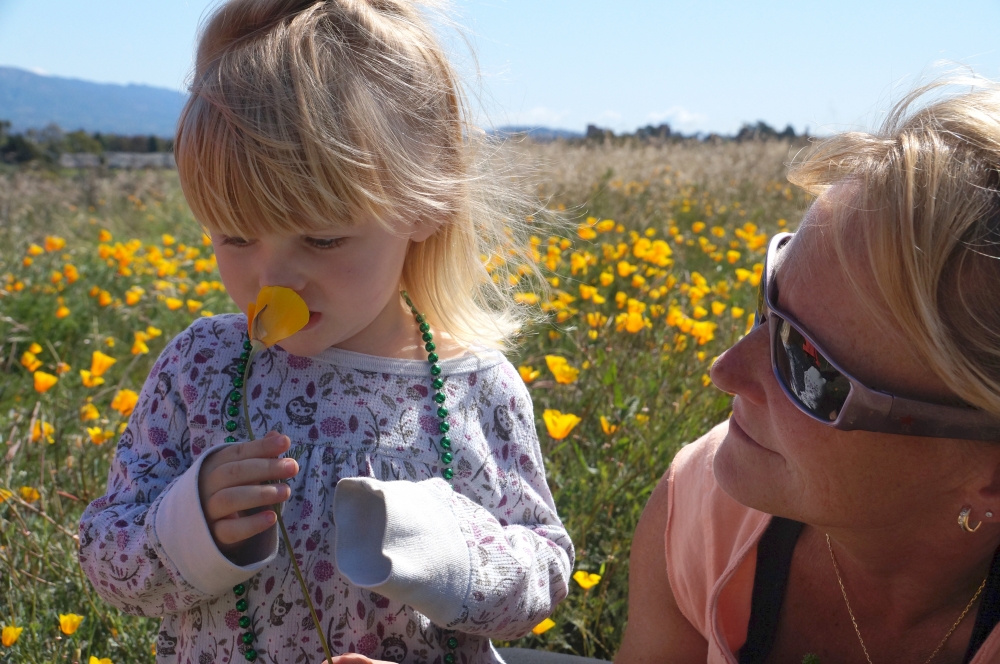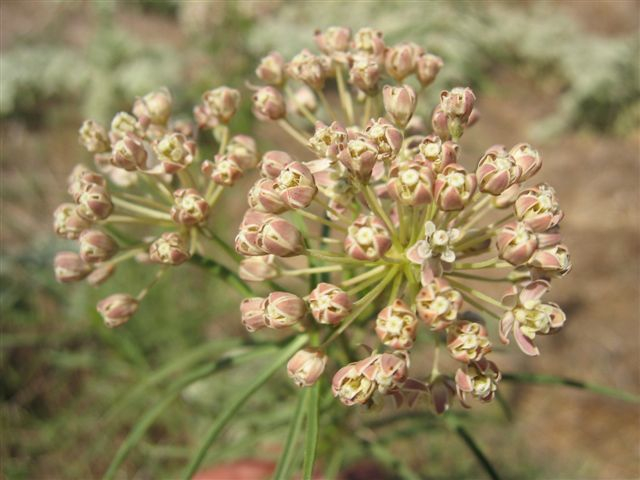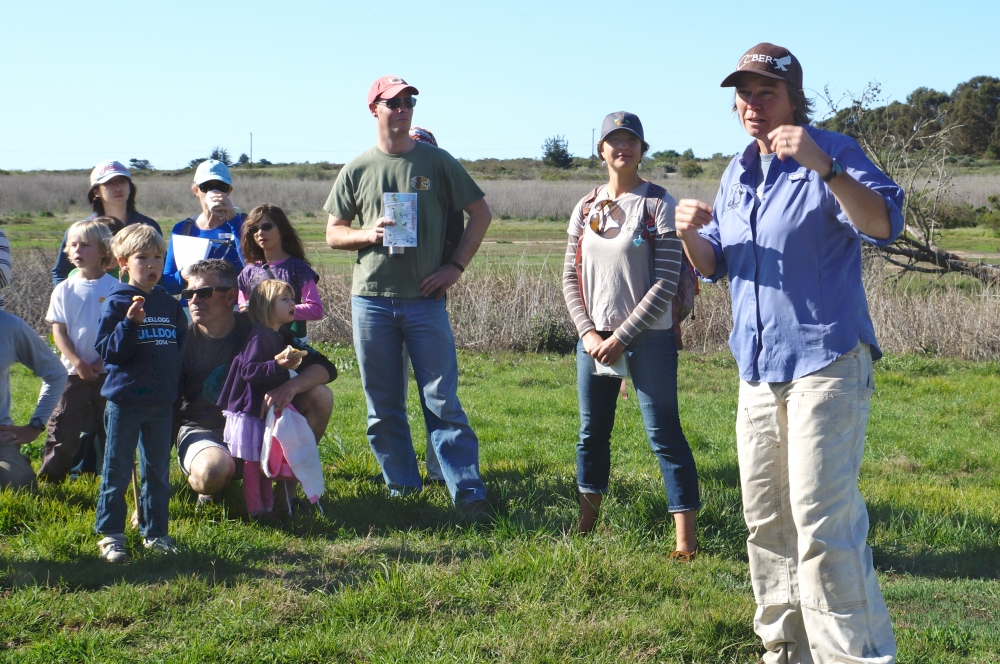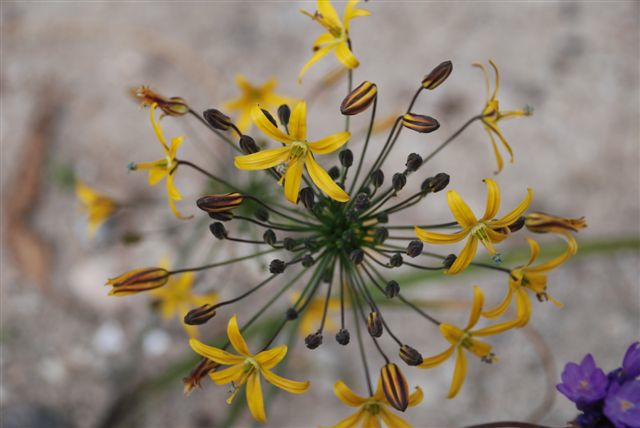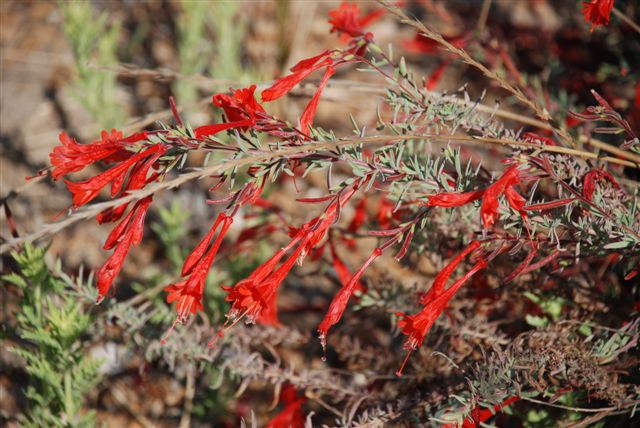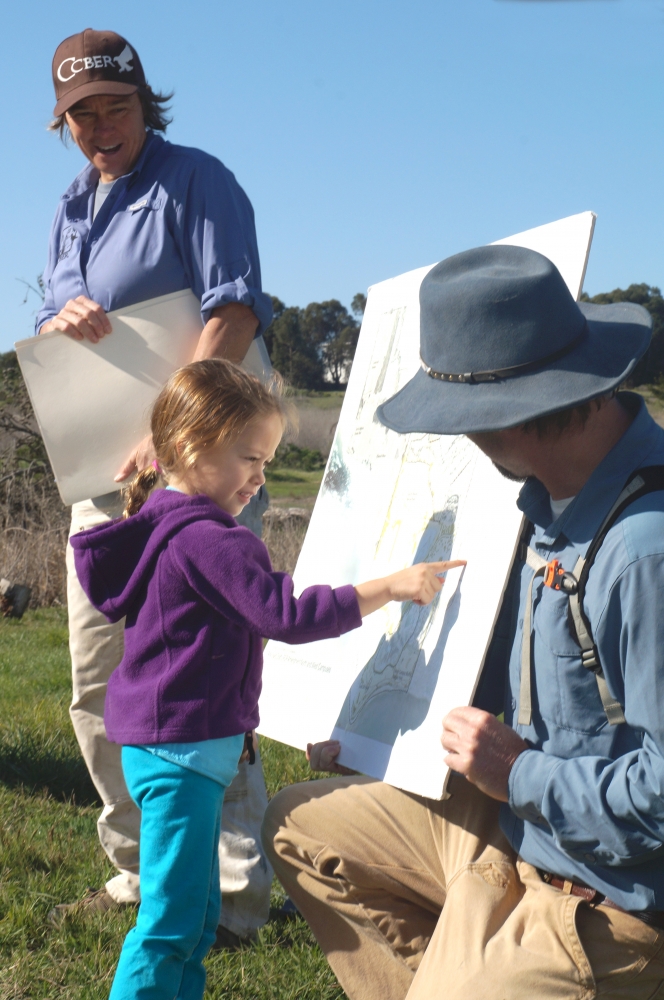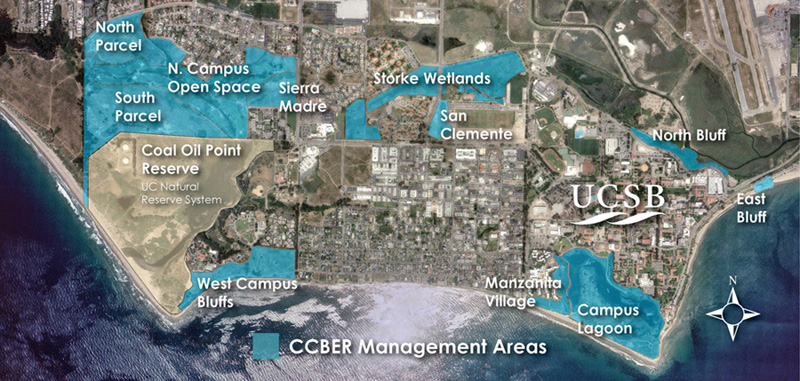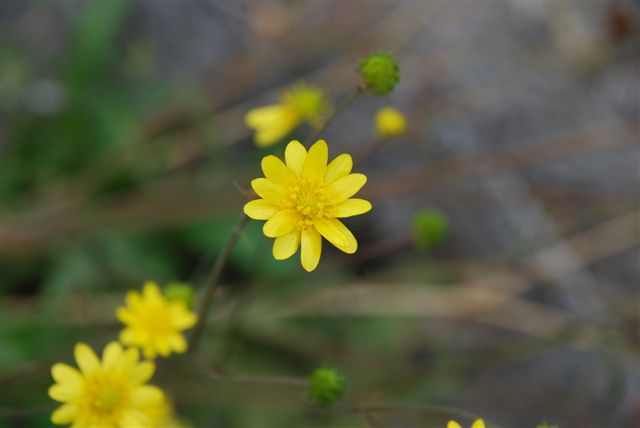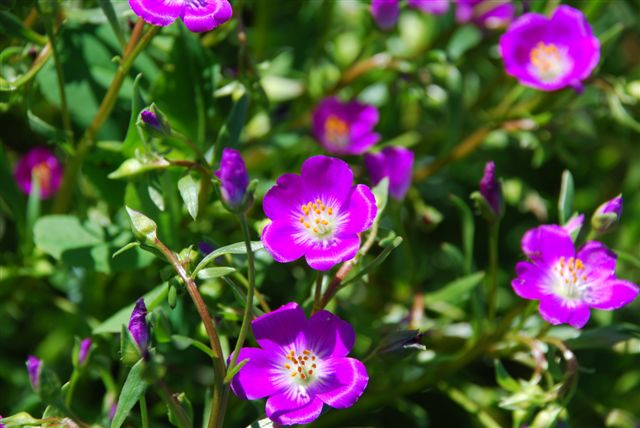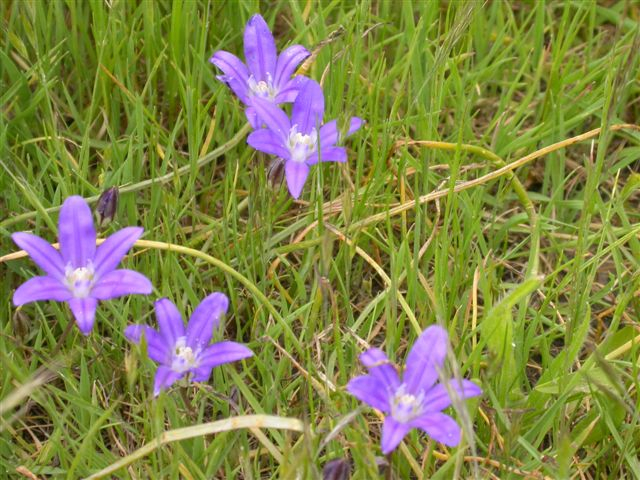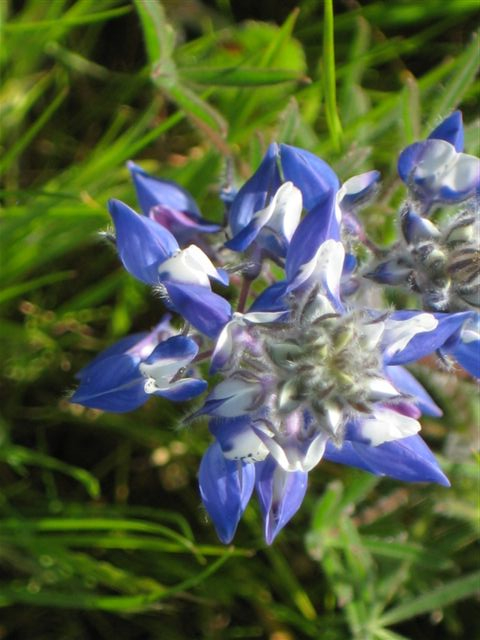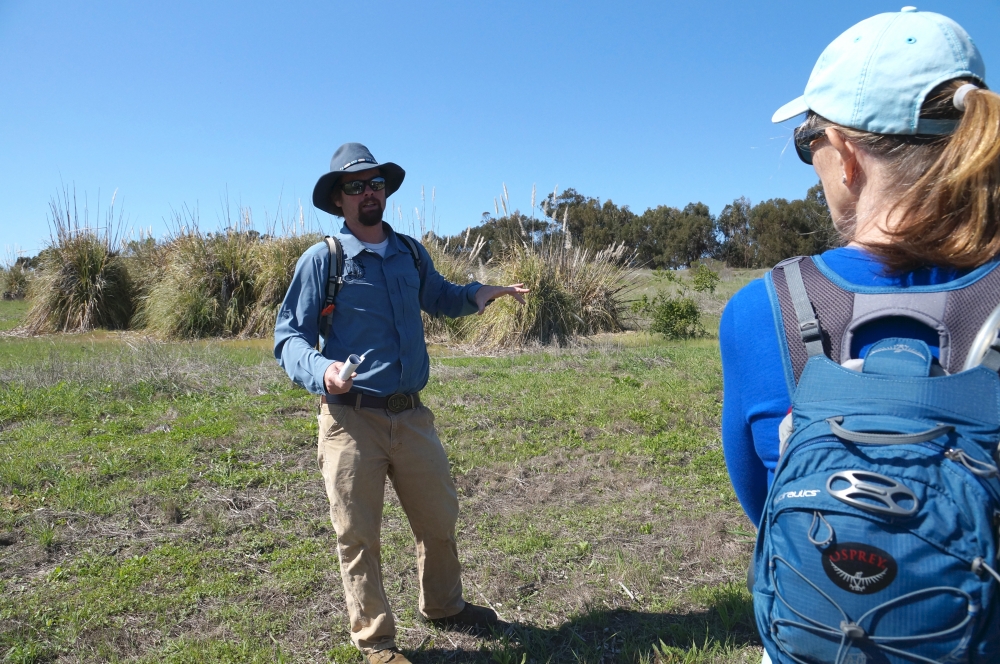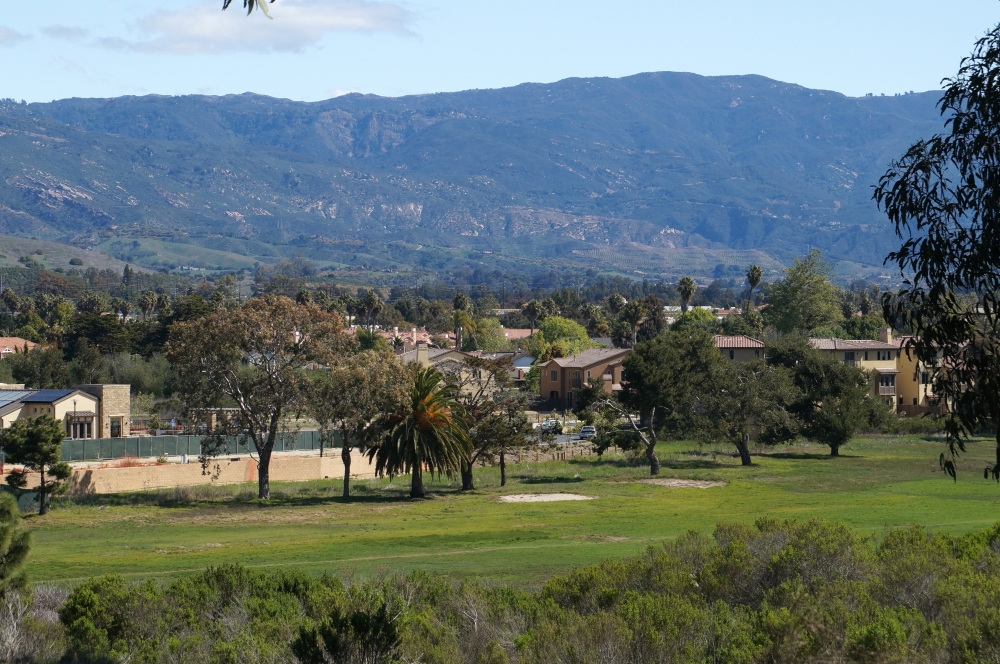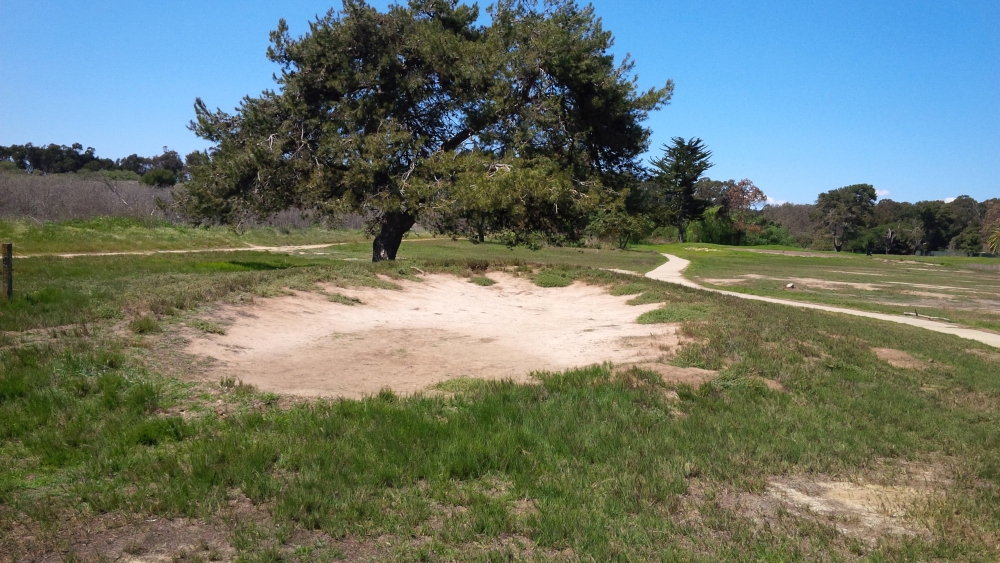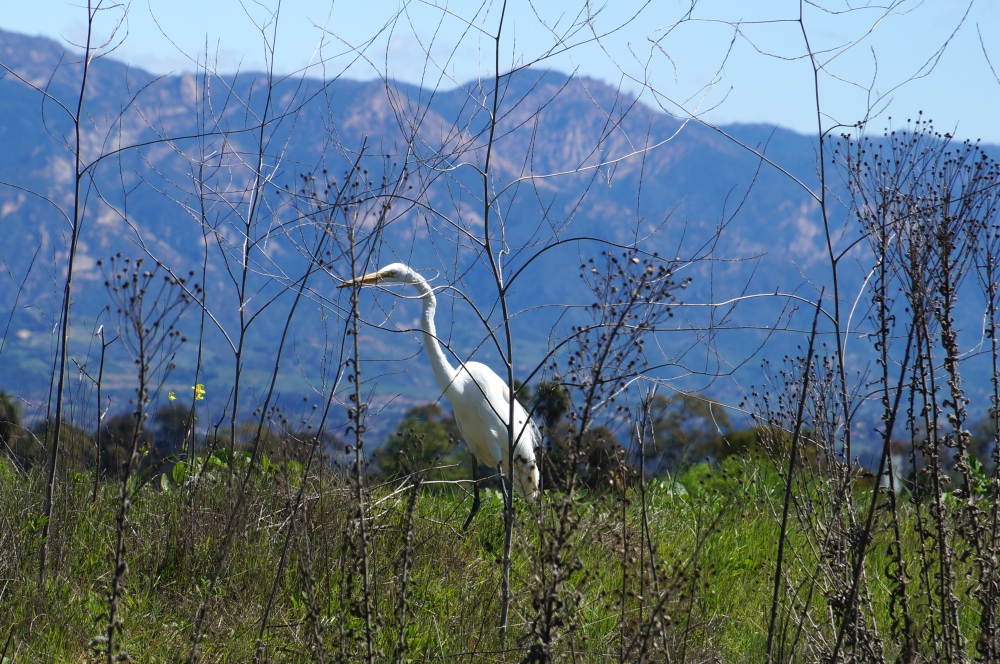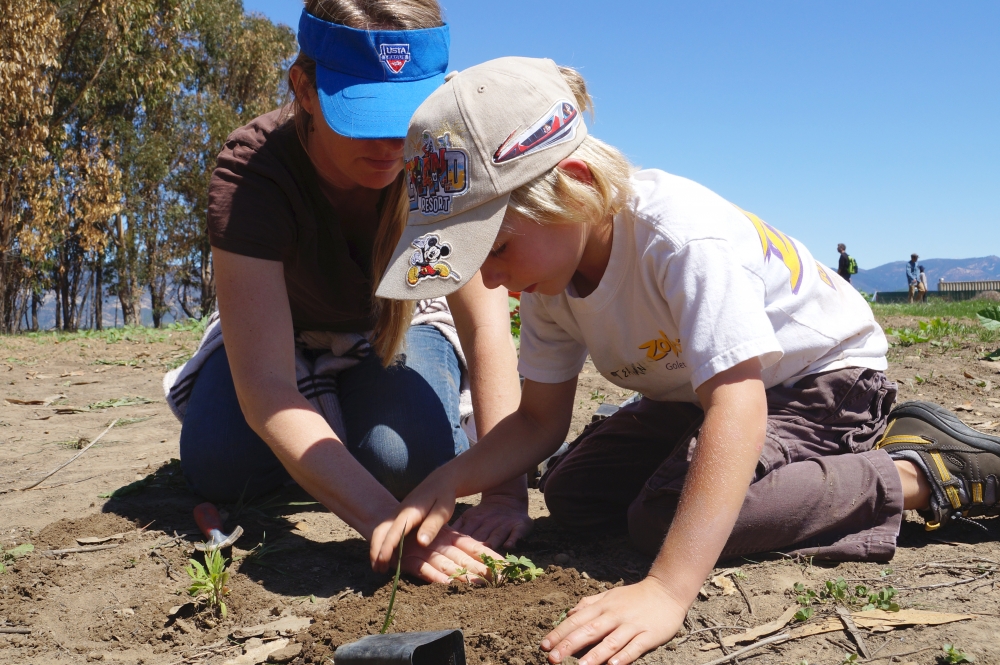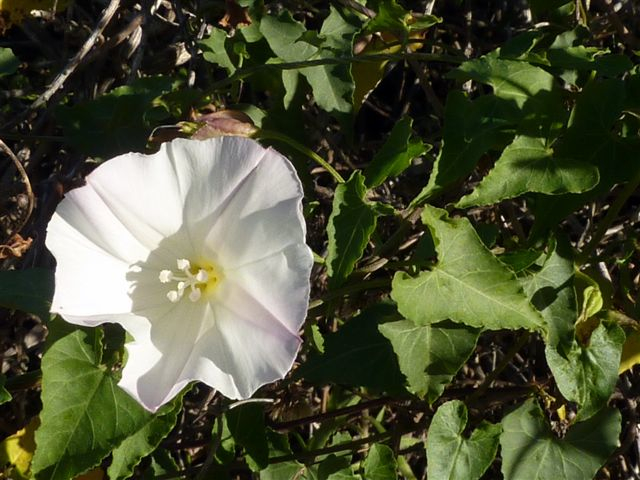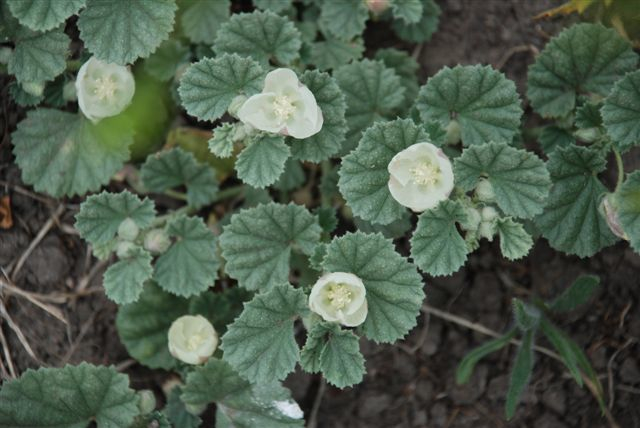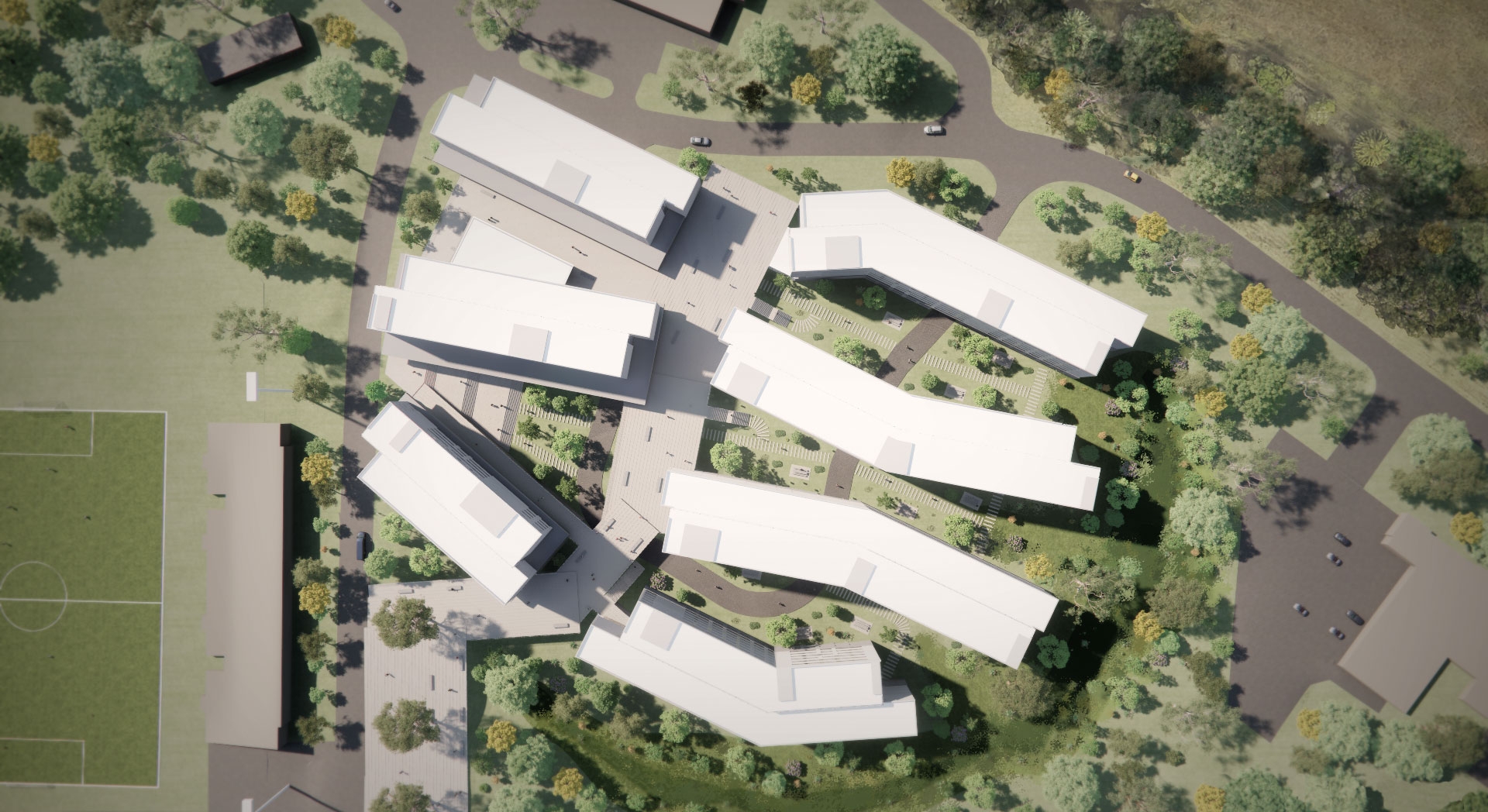A Walk on the Wild(flower) Side
At two-and-a-half years old, Piper is a natural when it comes to the outdoors. Her tiny stature allows flowers to come chest high, providing a view most plant lovers would envy. What's more, her native curiosity means nothing is off-limits — not the vegetation, not the birds, not the dirt, not even the bees, which she greets with an enthusiastic “Hello, bee!” as she ambles toward them.
“She loves the outdoors,” said Piper’s mother Laurie Sigloch, who teaches at nearby Dos Pueblos High School. “She will sit for an hour and sort through leaves, and she’s really intrigued by the minute details of nature. She won’t do that with her toys.”
Which is why Nature Saturdays, a monthly walk that takes place around UC Santa Barbara’s North Campus Open Space (NCOS) was the perfect opportunity for the biology teacher to take her nature-loving child outside last weekend. Presented by UCSB’s Cheadle Center for Biodiversity & Ecological Restoration (CCBER), Nature Saturdays features a new theme each month, centered around an aspect of the NCOS environment and CCBER-related activities therein.
“I’d like for our visitors to come away with a sense of connection to the land that’s right out at their backyard,” said Lisa Stratton, CCBER director of ecosystem management. “I want them to see one level deeper, with the wildflowers and the plants,” she added. That's something many visitors might have missed between private ownership of the area and the degradation of the land. Another important part of the outreach, Stratton noted, is to foster community between visitors — most of whom are likely to be neighbors of the property — and CCBER, which will be working on it for years to come.
With funding provided by the Outhwaite Foundation, CCBER developed the Nature Saturdays series to reach out to locals and visitors curious about the space between the university’s North Campus Housing development and the wetlands and ocean to the south. It’s the site of the former Ocean Meadows Golf Course, a 63-acre parcel that was formerly wetland. The site was filled in 1965 to create the golf course, but the persistent saltiness of the soil and regular floods in the low-lying land proved to be an expensive challenge for the golf course to meet as it tried to maintain its manicured greens and fairways. In 2013, the conservation group Trust for Public Land purchased the property and gifted it to the university, which plans to restore it to as much of its former wetland glory as it can.
Approximately 75 people attended the inaugural Nature Saturday, many of them neighbors of the former golf course, or new residents of the adjacent housing developments. All of them were interested in the now public open space. The first session focused on native plants and wildflowers. Led by experts with programs tailored to adults and children, attendees found the world at their feet open up as they walked along paths and trails that wound through the varying terrain.
“It’s been an interesting year,” said CCBER's Dave Harris, one of the guides who does restoration work on the site. The unusually dry weather resulted in relatively little in the way of wildflowers this year, though there were certainly enough native buttercups, asters, poppies, fuchsias and even miniature lupines to dot the landscape with tiny bits of color.
He pointed out exotic species, such as the pampas grass, and the ubiquitous fennel. Native to Argentina, pampas grass was sought after by the fashionable women of the late 19th and early 20th centuries who coveted their big, showy plumes. Fennel was thought to be brought over from Europe for food purposes. Both species are targets for removal because of their ability to spread and choke the natives out of their own habitat. However, part of CCBER’s job is to evaluate the benefit of exotics on the property and their role in supporting wildlife. The eucalyptus trees, for instance, are nonnatives, but in the absence of other trees in the area, they provide nesting places for local raptors.
“Just because something’s nonnative doesn’t mean it doesn’t serve a function,” said Harris.
One — and perhaps the only — silver lining in the ongoing drought, according to Harris, was that the less drought tolerant species — many of them invasives — are having a hard time coming back, leaving room for the California natives to take over.
With a total area of more 100 acres to restore in the area, CCBER has a lot of work to do. Some of the restoration work on the adjacent South Parcel is already established, with islands of restored natives poised to retake the landscape. As for the former golf course, it will be years before native plants replace the exotic turf and the landscape resembles its original appearance. In the meantime, CCBER will continue to help nature take back its wetland terrain, one native plant at a time.
CCBER’s Nature Saturdays series is a free community event that takes place from 9 a.m. to noon on the first Saturday of every month. The series will continue through September. Topics of future Nature Saturdays include birding and food webs; wetlands and watersheds; and exotic species management. Click here for more information, and to RSVP.
